

Hostel is a double edged sword - a sexy road movie and an absolute gore fest, which will at times have you squirming. To put this movie in the category of road movie may seem surprising, but essentially that’s what it is. It has all the elements required, the protaganists set out with the idea of finding something better. It goes on to almost toy with the idea of identity, with the main protagonist slowing manifesting into what he most detests. Gender features to a great extent for example the women are all portrayed as immoral, as prostitutes or sluts and the men (who are few and far between) seek frivolity on unprecedented levels; they buy women, judge them on their physical merits and seek only to fulfill their own needs. However, none of them deserve the fate that awaits them, and even the innocent are not spared. They are little more than small boys lost in a wood full of predators, and very far from home, yet they too have been predators in their treatment of women earlier on, in this way it could almost be comparable to a contemporary slasher flick.
 Behind its apparently bloody-mindedness, it is a deeply intelligent and angry film: graphic, but by no means extreme. Part fairy tale and part nightmare, the film proposes moral questions such as "What could you let yourself do if you did not have to account for your actions?" "What is a human life worth?" It is with musings such as this that we can see the direct influence of Takashi Miike, Eli Roth has wrapped biting social commentary in a bloody shroud, and it works. By no means is this the most profound or intellectual film in the season, narratively it leaves a lot to be desired, but the torture scenes are realistic and horrible. You cannot help but feel the pain of the victims, and this is where the film truly excels. For a few moments of nightmarish intimacy, you are made to empathize deeply with a stranger. Much like the closing scenes of Audition, you care about the victims and want their pain to simply STOP.
Behind its apparently bloody-mindedness, it is a deeply intelligent and angry film: graphic, but by no means extreme. Part fairy tale and part nightmare, the film proposes moral questions such as "What could you let yourself do if you did not have to account for your actions?" "What is a human life worth?" It is with musings such as this that we can see the direct influence of Takashi Miike, Eli Roth has wrapped biting social commentary in a bloody shroud, and it works. By no means is this the most profound or intellectual film in the season, narratively it leaves a lot to be desired, but the torture scenes are realistic and horrible. You cannot help but feel the pain of the victims, and this is where the film truly excels. For a few moments of nightmarish intimacy, you are made to empathize deeply with a stranger. Much like the closing scenes of Audition, you care about the victims and want their pain to simply STOP. It is here that the use of the road really becomes apparent, the viewer feels as though they have shared the journey and associate themselves with the experiences of the protagonists. This realisation is, for me, the scary part!
It is here that the use of the road really becomes apparent, the viewer feels as though they have shared the journey and associate themselves with the experiences of the protagonists. This realisation is, for me, the scary part!Film presented by Rachael McConkey.


There are some uncanny resemblances between Eli Roth’s Hostel and Greg McLean’s Wolf Creek. Leaving aside for a moment the severed fingers, the biggest similarity is the starting point of each narrative. Each film begins with a group of young twenty something backpackers, travellers searching for excitement.

In Australian horror flick Wolf Creek, the subject matter is approached in an integrally different manner. It has been argued that the torture sequences in Hostel lack something and are, therefore, gratuitous. Wolf Creek addresses this issue with an ample smattering of motivation and psychology, making it a harder to film to watch as a result, even though the torture scenes are nowhere near as graphic or obscene as in Roth’s splatterfest.
The films were both released in 2005 so it would be pointless conjecture to argue for a straight forward rip-off of one film by the other. What is more important is that both films reference their genre traditions and influences. In Wolf Creek the influences become much more eclectic. Alongside The Texas Chainsaw Massacre and Halloween, there is also an amusing becoming very unsettling Crocodile Dundee reference and an excellent homage to vehicular violence as immortalised by Spielberg’s Duel.
This season of films as a whole deals with different types of road movie. Road movies begin with a journey, which the road has come to symbolise. The protagonists are introduced at a juncture in their lives. They are faced with a choice – always pre-determined by the genre – to stay or to go. To stay means to stagnate. Often, the choice to stay can also represent a danger or threat that propels the desire for flight. Both sides of this coin are neatly represented in that classic road movie Thelma and Louise. Originally, the leads choose their journey as a respite from their deeply unsatisfying lives. This soon becomes a necessity after the shooting of a rapist. They can no longer give up their journey as this would lead to their arrest. The other choice, the choice always taken in a road movie, represents freedom, change, and the possibility of a future. Inevitably, the road movie captures an irony. It is the road itself that is dangerous and that will lead to circumstances above and beyond what the protagonists have welcomed at the beginning of their journey. The road, rather than offering freedom and escape, easily manifests itself as the very thing that must be survived and escaped from. The journey is arrested and with it, the potential for freedom. The road will leave its mark on any that survive it.
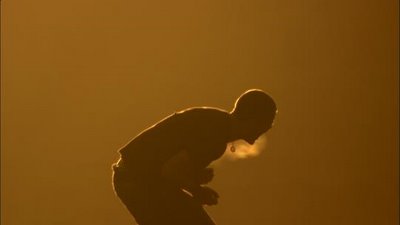
Wolf Creek plays out as, from the start, as expected given the definition just given. Ben, Liz, and Kristy are young backpackers planning to drive from Western Australia to Sydney via Darwin and the world’s second biggest discovered meteor site Wolf Creek. However, things don’t quite go as planned. As in Hostel, there is a strong under current of the effect of tourism, especially the kind of backpacker gap year tourism that has rapidly become a necessary part of the transition into adulthood in Western society. In Wolf Creek this is shown both by the British backpackers Liz and Kristy, and by Ben who is born in Sydney but for whom the Outback is as alien as it is to the Brits.
Wolf Creek, the meteor site to which the backpackers are travelling, is a real life geographical phenomenon which, although long familiar to the local Djaru Aborigines, wasn’t discovered by Europeans until 1947. The road that the backpackers travel over is nothing more than a thin strip of assumed civility papered over a vast and unknowable region. It is in believing that this strip will hold and protect them that is the travellers biggest mistake. I wouldn’t like to suggest that the city and civilisation should be considered good and the Outback a savage place, far from it. Rather, the idea that you can tame or understand a such a terribly beautiful wilderness through such symbols of progress as an arbitrarily placed strip of tarmac, should be recognised as utterly misguided and naïve. Incidentally, the killer is also posited as a non-native of the wilderness. This is not a film about evil Aborigines and courageous colonists.
Wolf Creek was entirely shot on high definition digital cameras and transferred over to 35mm in post-production where the colour was enhanced. A technique famously used in Sin City. What the procedure does for Wolf Creek is nothing short of spectacular. The scenes in the outback are so crisp and clean, it makes the inevitable horror to come almost unbearable.
This film was subject to a fairly harsh critical reception, the violence and torture clearly a step too far for some. Many Australian critics staged walk-outs during screenings, disturbed not only by the sadism and gore present in the film, but the belief that McLean had somehow made an un-Australian movie. Surprisingly though, many critics, mainly horror aficionados, were rejecting the movie because of the ‘slow’, ‘boring’ build up. Surprising as the build up in Wolf Creek is intentionally prolonged and impressive, reminiscent of and surpassing in calibre the build up and character development in British horror flick The Descent. By the time blood starts to spill in Wolf Creek, the viewer is well and truly tied to the characters. You will care. You will invest in them. Enter mayhem.
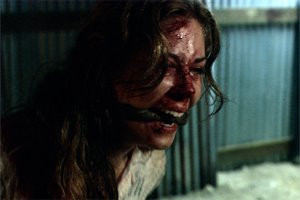
The film’s ending is an enigma. It isn’t clear what it is supposed to mean for the rest of the film and in a way makes irrelevant the scenes before, stripping away the apparent motivation and psychology of the killer and replacing it with guesswork. The fact remains that Wolf Creek is a deeply disturbing, beautifully shot, and intense piece of horror cinema that is as much a tribute to the genre as it is an original and inventive work by an up and coming Australian director.
Film presented by Vee Uye


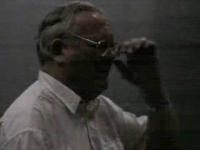
Click on the link to view Ramsey Campbell's introduction to Calvaire. This introduction was given as part of the European Nightmares conference on June 1st 2006.
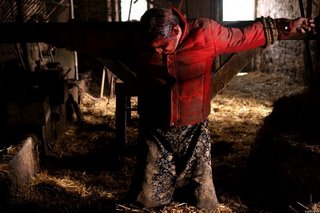
Presented by Ana Miller.


Ridiculed as the worst film in Cannes history, this offering from Vincent Gallo is renowned for its controversy. Not only for its framing as a misogynistic expedition into the ego of its Actor/Writer/Producer/Cinematographer/Camera Operator/Make-Up Artist/Caster/Artistic Producer/Set Designer/Editor and Director where no woman can resist his charms but also its 10 minute oral sex scene finale.
Now this film has been shackled by its reputation, not only for these reasons but it seems that Brown Bunny has waded through a quagmire of controversy and media ridicule. Can it ever stand in its own right as a beautifully poetic portrayal of a broken man with its most famous scene as an opening sentence to its poignant final paragraph used to twist the plot and raise it to an anti-road movie that contains a subdued momentum lacking in many of its peers.
Gallo has never shied away from his reputation and fuels his media coverage by stunts in one of the most bizarre attempts ever by a lesser movie celebrity to capitalize on his fame, Gallo offered to sell his semen for $1 million including "all costs related to attempt an invitro fertilization". Fertilization by Gallo "the old fashioned way" will cost $1.5 million. Gallo says that his offer is not open to "those of extremely dark complexions" and offers a $50,000 discount to any woman who is blonde, blue-eyed, or related to "any of the German soldiers of the mid-century." Gallo is also known for his unashamed attacks in the media that hit a peak when he wished that Roger Elbert, (the critic that helped to sink brown bunny for his claims of it being the worst film in Cannes history) would develop cancer, Elbert was subsequently diagnosed with thyroid cancer.
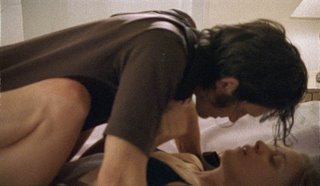
Gallo’s outspoken media persona and audacity as an auteur always wishing to kick up a fuss seem to be the final nails in the publicity coffin of Brown Bunny. His personal attacks on Elbert, calling him a “fat pig” in the press and Elbert retort that “I can loose weight but your film will always be a flop” and the media coverage of Chloe Sevigny being dropped by her agency, alongside its Gallo firing Kirsten Dunst as the lead role (supposedly) although Dunst Claims she walked out on the day of filming as the shoot didn’t comply with SAG guidelines all this and more has tainted many viewers perception of this movie.
Was Elbert right, will this film always be a flop? With the controversy fading over the years and Brown Bunny fading in the collective media mind as a film that should always be remembered for its tabooed finale, Brown Bunny can be re-framed as a cinematic offering that is both militant in it’s anti-commercialism and as a slow and winding portrait of a man worn down and broken beyond repair by guilt and lost love. This film like others in this season is anchored by its twist, the film relies on its final paragraph as so much of contemporary cinema does, leaving you in the final moments of the film with the heavy weight of loss.
Its opening shots of a motorbike race (on its first cut lasting a gruelling 20 minutes) are a perfect condescend metaphor to summarise the slow plot, a road movie with a circular track, where Gallo can never triumph, (after all Bud is never depicted as a good motorbike racer, and the viewer is left to imagine that in every race bud is left a looser). He looses the race and embarks on his road trip across America to his next race. Gallo’s first cut although unconventional would draw attention to the importance of this scene and work as a tool to highlight the often overlooked repetition and cycle in the narrative.

Its loitering grainy camera work in 16mm, it’s off kilter framings, lingering out of focus shots, powerful score and its sombre low tempo dialogue make a haunting portal of a man lost without love. As Gallo dashes the hopes of this female road trip companions and visits his past in an attempt to regain his love, every woman becomes one woman, Daisy. As Bud (Gallo) fills the void that has manifested through guilt with brief (non sexual) encounters with fleeting women, prostitutes and fast bikes a repetitive cycle unfolds that is left open to repeat its self, Brown Bunny is a portrait of desperation and solitude. In a tradition of road movies the characters emotional revelations are left till the final moments of the film, but with an open end, that is fast becoming a tradition in anti-road movies, this harrowing ending is a climax that contextualises the films meandering slow plot (one that so many people walked out on before seeing).
Shot with an average length of 18 seconds per scene compared with its American Cinema average of 2 to 5 seconds to ponder a shot, this deliberately slow paced, contemplative piece of cinema documents the mundane with a sharp eye. A seemly circular narrative shows that the pace of the movie is integral to its plot, and cements it as a perfect example of the new/anti-road movies.
Gallo’s slow pondering film, slowly constructs a seemingly continuous narrative of misogyny that unfolds to reveal its lead trapped with a cyclical and continuously repeating series of brief encounters, which at first seem to me to be a choice but as the film ends are revealed to be a pit of despair. Gallo/Buds life has become an ever closing tomb, a monument to lost love with seemly no escape.
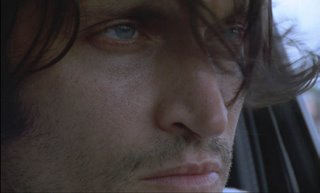
Film presented by Alan Hook


South American, or Latin American cinema has a prestigious history. In the 50s and 60s directors such as Solanas and Getino reacted against the ‘golden era’ of the 40s with the international film movement of the Third Cinema – neither Hollywood-esque commercial product nor elitist arthouse. Third cinema was a political cinematic movement that co-joined the continents of Africa and South America and represented an attempt to film from the perspectives of the people who were under both political and economic imperialism by Europe and the USA. And there was, of course, the Cinema Novo in Brazil, represented by Rocha. But popular South American cinema of the 40s, turned another way – most significantly represented by the Mexican lucha libre free style wrestling movies of El Santo.
Motorcycle Dairies is definitely part of a renaissance of South American popular cinema. Along with such films as Ameros Perros (2000) directed by Alejendro Gonzales Inarritu; Y tu mama tambien (2001) by Alfonso Cuaron; and City of God (2002) by Fernando Meirelles, Carandiru (2005) by Hector Babenco, Motorcycle Dairies represents the cutting edge of what multinationally funded South American popular cinema can achieve. Inarritu has gone on to direct 21 Grams; Cuaron a Harry Potter episode and the excellent Children of Men; Meirelles, The Constant Gardener; and Salles is working on Kerouac’s On the Road. The hope must be that this does not constitute an relinquishing of their homelands.
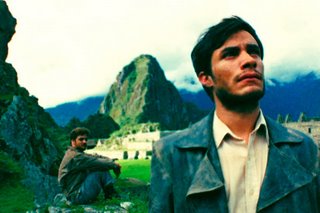
Of all the films, Motorcycle Dairies has the closest relationship to Third Cinema, though the director Walter Salles has ‘hidden’ this within the film… specifically in the middle section when the camera is forced to go on the road with the travellers undergoing problems with limited crew, low light and bad weather; but also with the use of non-actors… the use of semi-still images avoids sentimentality, but also anchors the film in an historical dialectic, the people do not ‘play’ people from 1952, they are present now as ‘real’ people… and it is interesting that the political situation that gave birth to Third Cinema, also gave birth to Che Guevara – or rather – politicised the young Ernesto during his trip on a motorcycle around South America.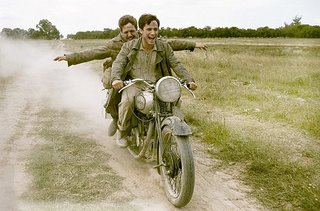
Eight years later, Guevara would write in his book ‘Guerrilla Warefare’:
‘The guerrilla band is an armed nucleus, the fighting vanguard of the people. It draws its great force from the mass of the people themselves.’
… and so does Salles’ film. Indeed, Salles began by making documentaries and is inspired by the documentary format in the fiction film. As he said in 2004 at the NFT:
‘I think I turned to documentary film-making very early on as a way to know a little bit more about my country and my roots... That's why I have always admired documentaries, because they open windows that can make you understand much better where you come from, much better than fiction, I think. So this was a really good place to start. I did documentaries for maybe 10 years before I turned to fiction films... I think fiction film-making is... deciding what is part of the film and what is not. The necessity to conceptualise has to come very early on, and defining a vector of development for that film also at the beginning of the process will allow you much more freedom as you go along. I don't believe in such a thing as a "locked" screenplay. On the contrary, I'm a strong believer in the necessity of imperfection coming into the film. But I also think that the more you reason collectively about what the project should be at the beginning of the process, the more you can improvise later.’

Presented by David Deamer.

Labels: Trauma Team presentation



0 Comments:
<< Home